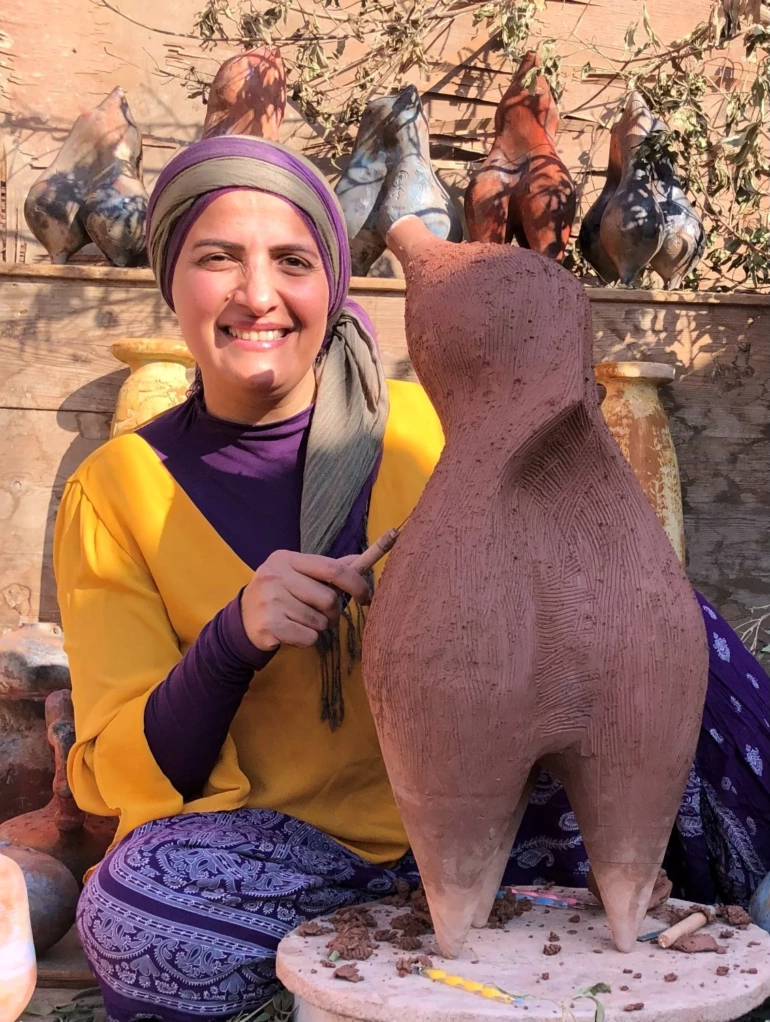CONCEPT
‘Ma’at is a symbol of truth, justice, cosmic order, righteousness, and honesty. Ma’at embodies the principles that govern the universe and the balance between chaos and order and is considered a moral compass for social and religious life. Through this work, I transform a “ring” attributed to one of the kings of ancient Egypt from a small relic worn and used as a seal for documents into a public architectural monument, from personal property to a shared space, and from a sign of authority that tightens restrictions to a lens that opens onto a wider horizon. The work takes the form of a large ring, its circle forming an opening through which the top of the pyramid standing in the background is visible. The circle becomes a window that frames time, making the past visible in the present. I inscribed the surface of the ring with phrases from the Book of the Dead that revolve around dignity, bread, the scales, and justice, the core beliefs the ancient Egyptians held as rights for all people, but especially the powerless. Here, the ring transforms from a seal that commands a covenant. The inscriptions include:
I will not deprive the poor of their possessions. You will not be poor, you will not be miserable, and poverty will not bend you. Be kind to the needy. Do not differentiate the son of a rich man from the common man.
Do not strip the poor of their possessions. There are no hungry people in my age.
I have given bread to the hunger. With this transformation, the work aligns with Maat as the principle of balance and justice: the circle is a visual scale, and its frame equates the mass of stone with the void, presence with absence, the influence of the king with the voice of the people.’


